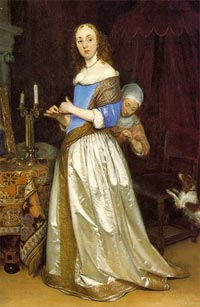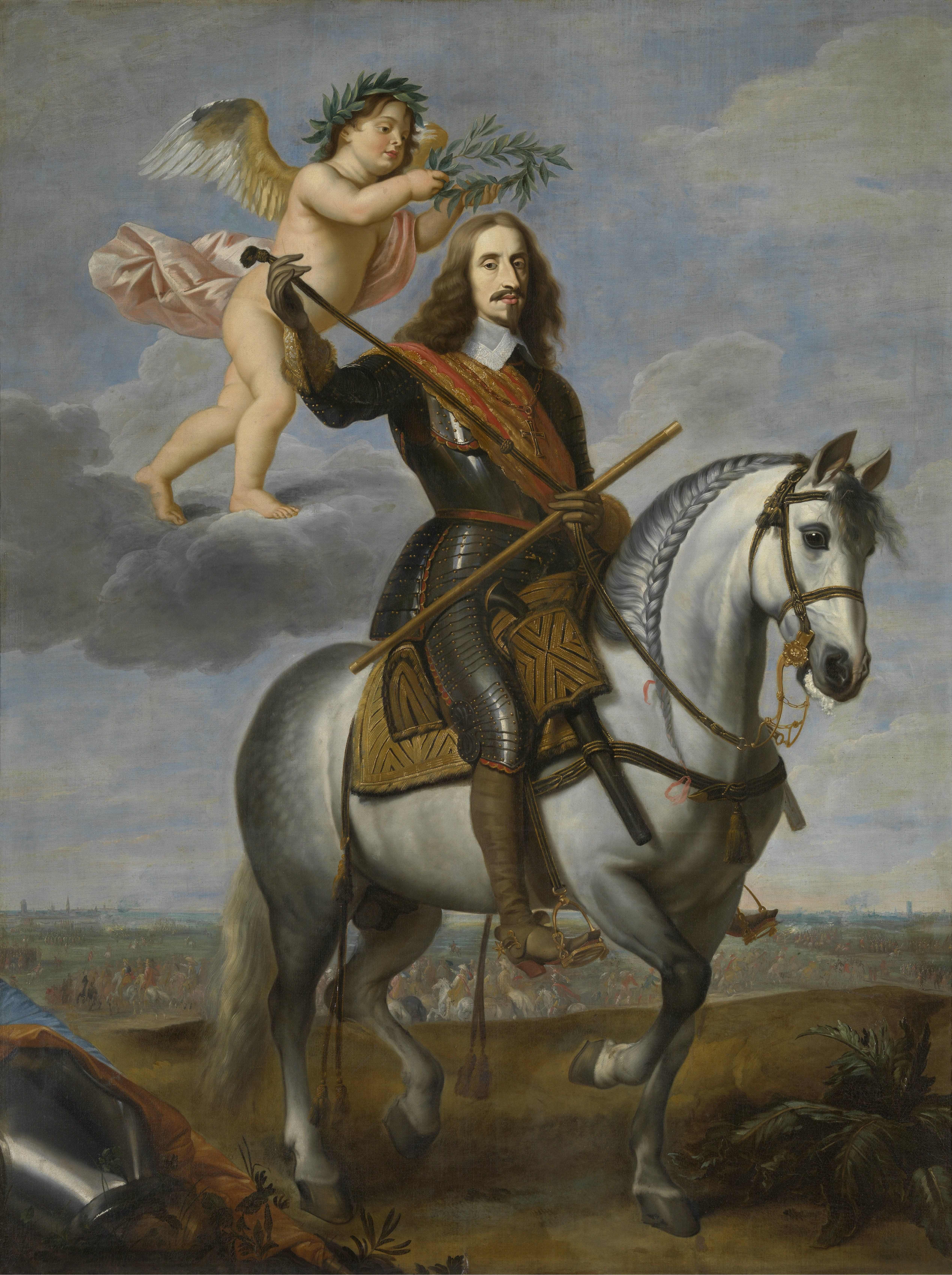So in looking over some posts about the Spanish succession crisis of the late 17th century it struck me that there was another possibility beyond the ones commonly considered. The obvious solution is a surviving Balthasar Carlos or a different second (or third) marriage for Philip IV or something along those lines. This would continue the male Habsburg line in Spain an avoid the contest between Maria Theresa's French descendants (technically excluded by terms of her marriage contract and her father's will) and the the descendants of her younger sister Margaret Theresa.
But what if one of Philip IV's elder daughter's and survived? He had four daughters with Elizabeth of France before the birth of Balthasar Charles. For the sake of argument say Maria Eugenia (who lived the longest OTL) survives. She was born in 1625, four years before Balthasar Charles. She would have been just shy of her 21st birthday at the time of his OTL death. I suppose her being there could prevent his death but then again she could have been married and living elsewhere by 1646. Assuming he still dies she becomes heiress presumptive.
Her younger sister Maria Theresa probably still marries Louis XIV, if anything the marriage may be more likely since she would have no claim to the Spanish throne with an elder sister. Philip IV probably still remarries like OTL in a quest for a son and I don't see him having any better luck than OTL. I could see Maria Eugenia marrying either Leopold Wilhelm around 1644-45 or, as his second wife, Ferdinand III around 1647-1650. I want to say that the former is more likely as I'm not sure they'd wait until she was 20+ to find her a husband but Maria Theresa was 22 when she married Louis so I suppose either is possible.
Either way there is now a cadet line of Austrian Habsburgs with an indisputable claim to the Spanish throne. Maria Eugenia would be Leopold and Ferdinand's first cousin once-removed so they're actually less closely related than Ferdinand and his first wife Maria Ana (his first cousin) and Leopold and Margaret Theresa (who was both his niece and first and second cousin). Hopefully this bodes well for producing healthy offspring. Not great but better than OTL.
I assume Louis XIV still finds an excuse to attack Spain when Philip IV dies but beyond that what would be the affects on Spain with a more (but not totally) secure succession going into the late 1600s? The underlying problems are still there and if there still is a weak Charles II analogue to succeed Philip IV there could be a debilitating Regency before the Austrian branch accedes to the throne. Any chance that Philip IV bequeaths the Spanish Netherlands to Maria Eugenia a la Philip II and Isabella Clara Eugenia?
But what if one of Philip IV's elder daughter's and survived? He had four daughters with Elizabeth of France before the birth of Balthasar Charles. For the sake of argument say Maria Eugenia (who lived the longest OTL) survives. She was born in 1625, four years before Balthasar Charles. She would have been just shy of her 21st birthday at the time of his OTL death. I suppose her being there could prevent his death but then again she could have been married and living elsewhere by 1646. Assuming he still dies she becomes heiress presumptive.
Her younger sister Maria Theresa probably still marries Louis XIV, if anything the marriage may be more likely since she would have no claim to the Spanish throne with an elder sister. Philip IV probably still remarries like OTL in a quest for a son and I don't see him having any better luck than OTL. I could see Maria Eugenia marrying either Leopold Wilhelm around 1644-45 or, as his second wife, Ferdinand III around 1647-1650. I want to say that the former is more likely as I'm not sure they'd wait until she was 20+ to find her a husband but Maria Theresa was 22 when she married Louis so I suppose either is possible.
Either way there is now a cadet line of Austrian Habsburgs with an indisputable claim to the Spanish throne. Maria Eugenia would be Leopold and Ferdinand's first cousin once-removed so they're actually less closely related than Ferdinand and his first wife Maria Ana (his first cousin) and Leopold and Margaret Theresa (who was both his niece and first and second cousin). Hopefully this bodes well for producing healthy offspring. Not great but better than OTL.
I assume Louis XIV still finds an excuse to attack Spain when Philip IV dies but beyond that what would be the affects on Spain with a more (but not totally) secure succession going into the late 1600s? The underlying problems are still there and if there still is a weak Charles II analogue to succeed Philip IV there could be a debilitating Regency before the Austrian branch accedes to the throne. Any chance that Philip IV bequeaths the Spanish Netherlands to Maria Eugenia a la Philip II and Isabella Clara Eugenia?



